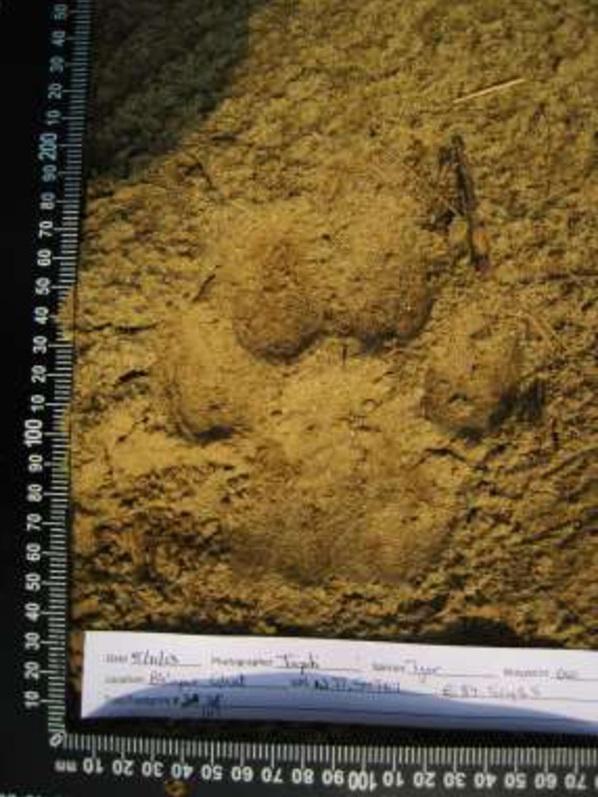Tripti Suwal
The purpose of this study is to assess the value of Footprint Identification Technique in efficient monitoring of rhinoceros and tiger populations in Chitwan National Park, and to encourage the involvement of local wildlife trackers in conservation initiatives.
Wildlife monitoring techniques employed in many parts of the world, including Nepal, are invasive and costly; therefore, finding alternative methods that are cost-effective, sustainable, and harmless to animals would help improve conservation efforts. Footprint Identification Technique developed by WildTrack is a non-invasive wildlife monitoring approach which eliminates the harmful consequences of physically handling animals, increases community involvement and improves the robustness of the monitoring system.

Tiger footprint in the mud.
Furthermore, this project will serve as the basis for which WWF-Nepal will determine whether to adopt FIT for future wildlife monitoring and censuses.
FIT identifies animal tracks at the species, individual, sex or age-class level of classification. To begin the process, continuous animal tracks are located by following local wildlife trackers. Once tracks are found, photographs of each print will be taken following WildTrack’s standardized protocol. Finally, the images will be processed and analysed using JMP software with assistance from WildTrack officials to assure accuracy.
In addition to implementing FIT in Nepal for the first time, this study will evaluate how using FIT in conjunction with camera traps will help expand the utility of an already established monitoring approach, and create a more robust and comprehensive monitoring system. DNPWC and WWF-Nepal use camera traps extensively for census and monitoring purposes in Chitwan NP. Although camera traps are non-invasive, they are expensive to maintain, and data collection is restricted to areas where cameras are set up. Most animals cover wide ranges of land every day but camera traps can provide only limited information about the population and movements of target species. In contrast, FIT is flexible. Field work only requires expert wildlife trackers, usually native people, and digital images of the animal tracks. Trackers can cover wide range of areas, including possible habitat sites of rhinos and tigers in Chitwan. Moreover, by utilizing the skills of native wildlife trackers, FIT encourages community involvement and interest in conservation efforts. This co-benefit of FIT offers excellent prospects for enhancing conservation initiatives to protect endangered species in Nepal as well as building community leadership to preserve natural heritage.